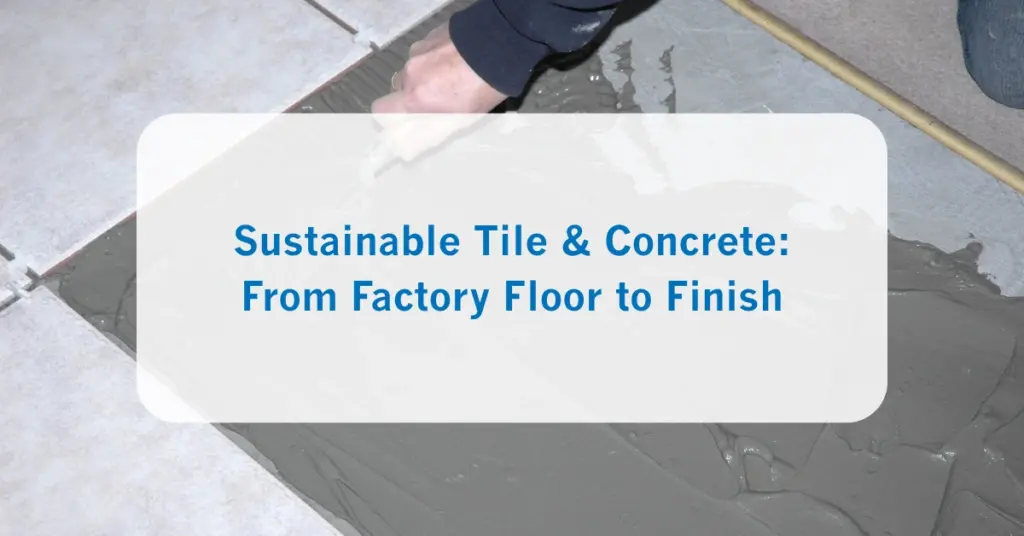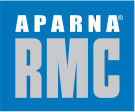Sustainable Tile & Concrete: From Factory Floor to Finish

October 28, 2025
Introduction: The Journey of Every Building Material
When you walk across a perfectly laid floor or enter a solid concrete structure, it’s easy to admire the finished space — but few realize the story behind it. Every tile, every slab of concrete, begins its life in a factory where design meets technology and sustainability.
Both Vitero Tiles and Aparna RMC, part of the Aparna Group, exemplify this balance. Through eco-conscious production practices, they deliver building materials that are durable, beautiful, and environmentally responsible. Together, they’re redefining how India builds — from factory to floor.
Vitero Tiles: Crafting Sustainability into Design
Vitero Tiles are produced at one of India’s most advanced manufacturing units — the Peddapuram plant, designed to combine efficiency, innovation, and ecological responsibility. The brand’s commitment to sustainability extends beyond design, influencing every stage of production.
Key Sustainable Practices at Vitero
1. Energy Efficiency
- Modern kilns with heat-recovery systems minimize fuel use.
- High-efficiency machinery optimizes power consumption during every production cycle.
2. Water Conservation
- Closed-loop recycling systems reuse water in polishing and cutting.
- Reduced wastage ensures large-scale, eco-friendly production.
3. Waste Management
- Broken or defective tiles are recycled back into raw materials.
- Adopts a zero-waste philosophy, reducing landfill contribution.
4. GreenPro Certification
- Vitero Tiles carry GreenPro certification, validating their eco-friendly design and responsible sourcing.
- Builders and architects can confidently choose them for sustainable projects.
Example: In large residential complexes, switching to GreenPro-certified tiles has been shown to improve IGBC or LEED scores, increasing both environmental performance and project value.
Aparna RMC: Reinventing Concrete with Sustainability
Concrete forms the structural heart of every building — yet conventional cement production contributes heavily to global CO₂ emissions. Aparna RMC is changing that narrative through technology, innovation, and green engineering.
Aparna’s Sustainable Manufacturing Practices
1. Supplementary Cementitious Materials (SCMs)
- Uses fly ash, GGBS, and silica fume to replace a portion of cement.
- This substitution significantly reduces carbon emissions while improving long-term durability.
2. Automated Batching Plants
- Fully computerized systems ensure precision in every mix.
- Prevents raw material wastage and overuse of cement, enhancing both quality and sustainability.
3. Efficient Logistics
- Optimized fleet management cuts fuel use and emissions.
- RMC plants are strategically located near major project sites, reducing transportation distances.
4. Durability as Sustainability
- Long-lasting mixes mean fewer repairs and reconstructions, conserving energy and resources over the life of the structure.
Case Study: In a Hyderabad IT park, Aparna RMC’s eco-friendly concrete reduced embodied carbon by 25%, while delivering higher compressive strength than conventional mixes.
The Synergy: Tiles & Concrete as Sustainable Partners
When Vitero’s eco-friendly tiles meet Aparna’s sustainable concrete, the result is a high-performance system that’s both aesthetic and responsible.
Combined Advantages
- Durability: Floors that withstand years of wear and tear.
- Eco-Conscious: Lower carbon footprint across both materials.
- Value-Enhancing: Improved project sustainability ratings (LEED, IGBC, GRIHA).
This synergy is particularly powerful for:
- Green-certified offices — where sustainable materials are now mandatory.
- Premium residences — offering luxury with conscience.
- Public infrastructure — airports, hospitals, and malls that demand longevity and low maintenance.
Why Manufacturing Transparency Matters
Today’s customers — from homeowners to corporate developers — expect accountability. They want to know:
- Where was this material made?
- How was it manufactured?
- What impact does it have on the planet?
By openly sharing their sustainable production methods, Vitero Tiles and Aparna RMC foster trust, transparency, and leadership in India’s green construction movement. Their factories aren’t just production units — they’re proof that sustainability and strength can coexist.
FAQs About Sustainable Tile and Concrete Manufacturing
Q1. How does Green Concrete differ from normal RMC?
Green concrete replaces a portion of cement with by-products like fly ash or GGBS, cutting CO₂ emissions without compromising strength or performance.
Q2. Are eco-friendly tiles more expensive than regular tiles?
Not necessarily. While slightly higher in initial cost, their long lifespan, durability, and contribution to sustainability ratings make them more economical in the long run.
Q3. Can sustainable tiles and concrete be used in small-scale projects?
Yes. Both homeowners and developers can benefit. Aparna RMC offers custom concrete mixes for everything from independent villas to mega infrastructure projects.
Q4. Does sustainable manufacturing affect product quality?
On the contrary. Advanced recycling, automation, and waste-reduction enhance quality, consistency, and finish across every batch.
Conclusion: From Factory to Floor, the Future is Sustainable
The construction industry’s future depends on responsible manufacturing. With Vitero Tiles leading sustainable surface innovation and Aparna RMC redefining eco-friendly concrete production, the journey from factory to floor is now greener than ever.
Every project — residential, commercial, or industrial — benefits when sustainability is built into every layer. It’s not just about creating strong structures; it’s about building a stronger planet.
